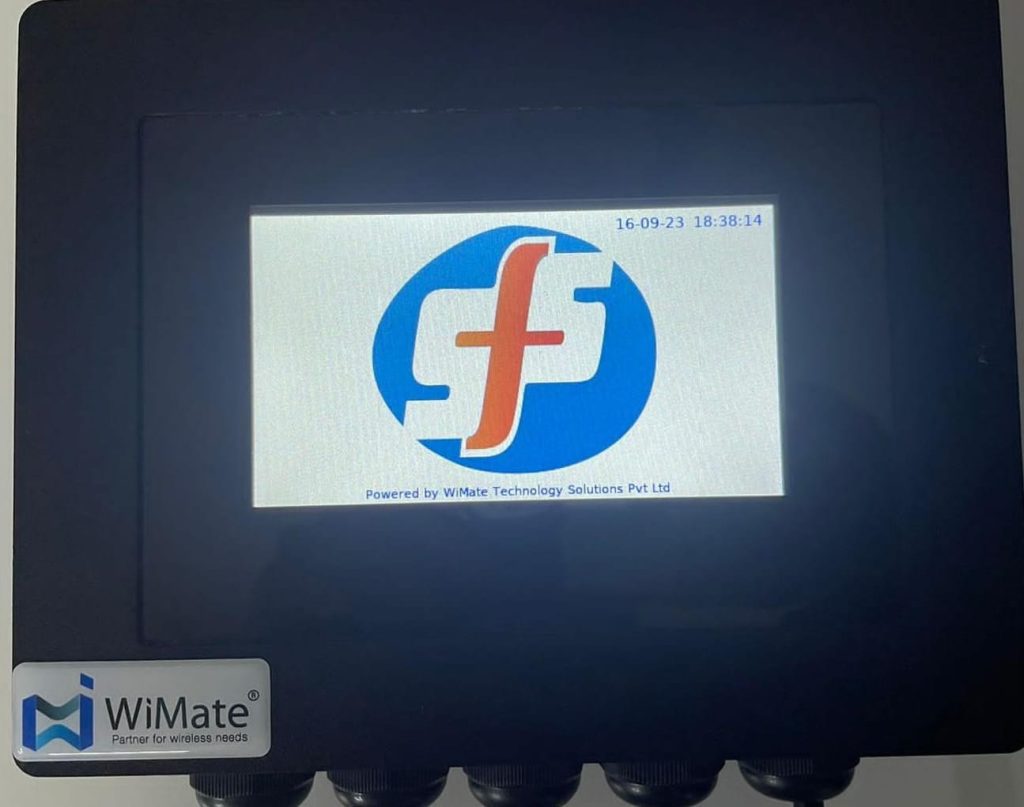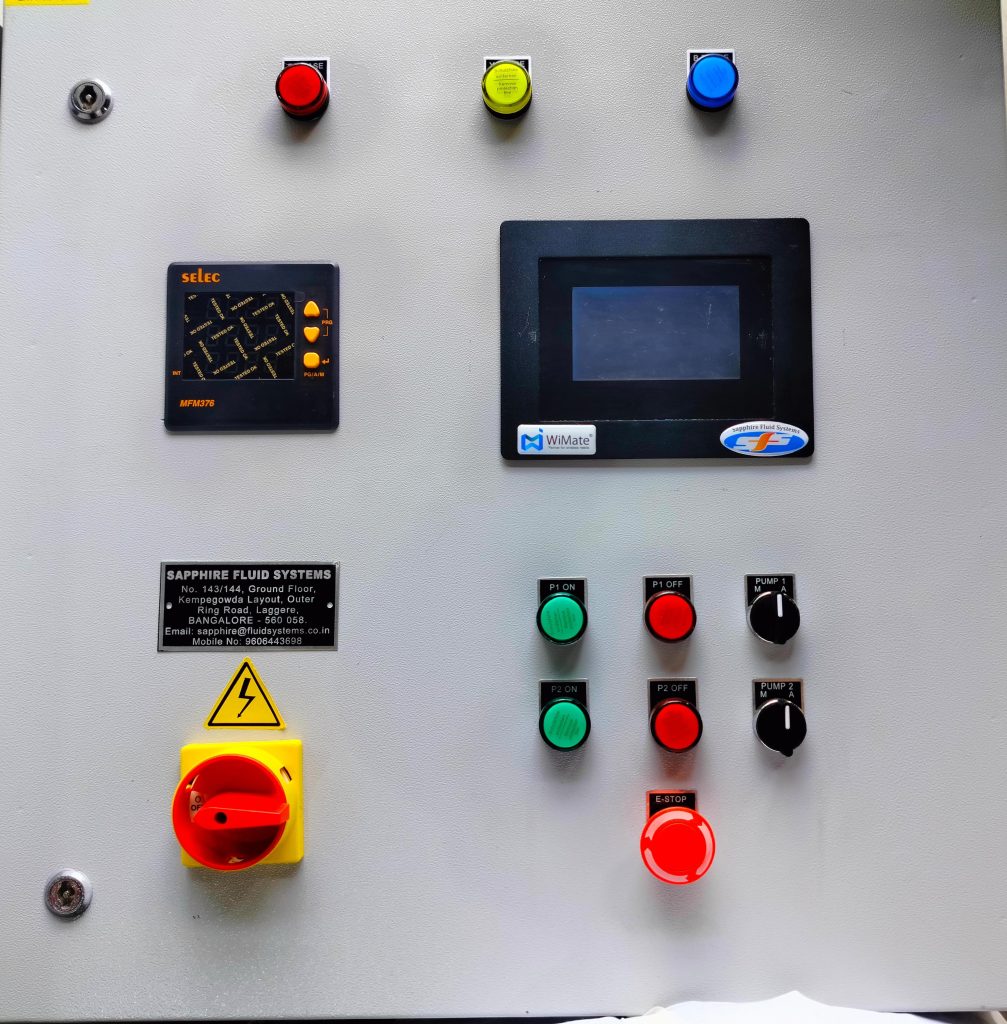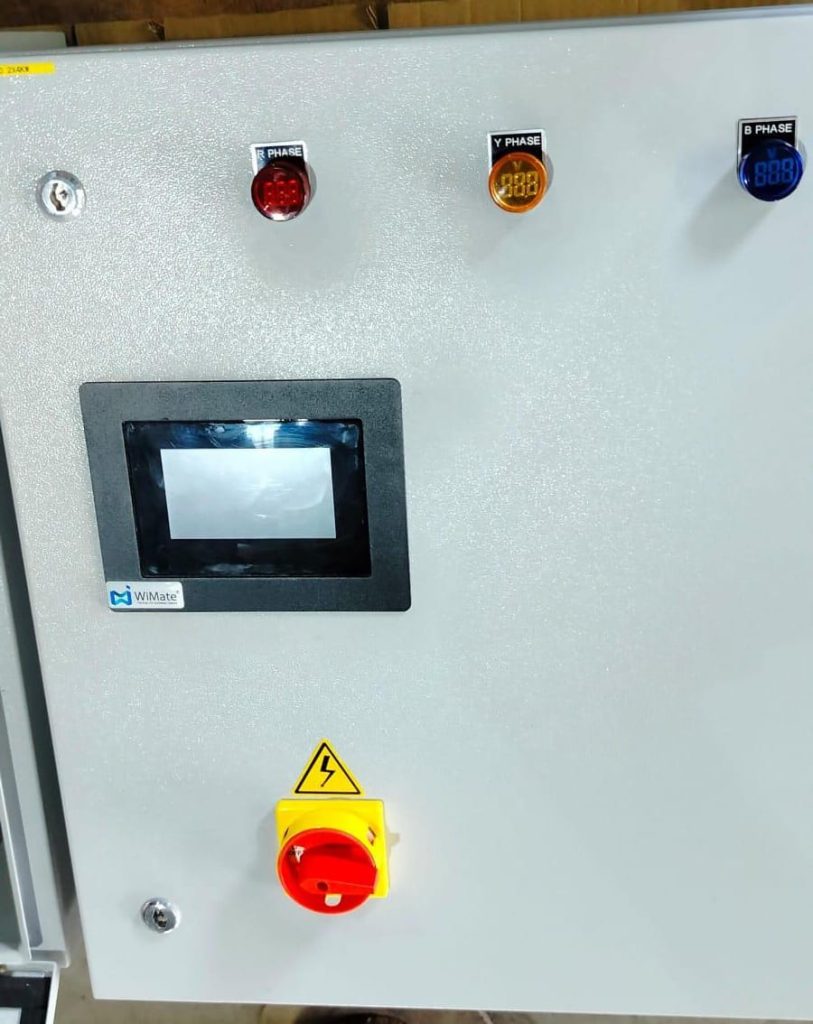Control Panels
A sapphire Fluid Systems controller for Hydro pneumatic system and Multi pumps operates a pump at a constant speed, meaning the motor runs at full capacity regardless of the system’s demand. This type of control is commonly used in systems where the load and flow requirements do not change frequently or where simplicity and cost-effectiveness are priorities. The pump is typically started and stopped based on a set pressure or flow rate, without the flexibility to adjust its speed to varying system conditions.

Key Features and Drawbacks of Fixed-Speed Pump Control Panels
- Simplicity: These panels are relatively simple and less expensive compared to variable-speed control systems. They often include basic components like pressure switches, relays, and circuit breakers.
- Constant Operation: Fixed-speed pumps run at a constant speed, which may lead to inefficiency when the system does not require full capacity. This can result in energy waste, especially in applications with fluctuating demand.
- Limited Control: Fixed-speed control does not offer the flexibility of adjusting pump speeds to match varying load conditions. As a result, it can lead to over-pumping or under-pumping in certain situations.
- Cost-Effectiveness: Ideal for applications where energy efficiency is not a priority, or where the demand remains relatively stable, fixed-speed systems can still offer reliable and affordable operation.
For systems with variable demand or those aiming for higher efficiency, a variable-speed control system (like a VFD system) is often preferred. However, fixed-speed control panels remain an effective solution for simpler or budget-conscious applications.

Fixed speed with PLC panel
A Fixed speed with PLC panel is used to control the speed and torque of an electric motor, typically in pump applications. It adjusts the motor’s speed according to the system’s demands, which can result in significant energy savings and enhanced operational efficiency. The VFD modifies the frequency of the electrical supply to the pump, allowing it to run at optimal speeds for varying load conditions, rather than running continuously at full speed.
Key Benefits of Using a Fixed speed with PLC panel
- Energy Efficiency: By matching the motor speed with the demand, VFDs can reduce power consumption by up to 50% in some pump systems.
- Reduced Wear and Tear: The soft-start feature of VFDs reduces mechanical stress on the pump and motor, extending their lifespan and reducing maintenance costs.
- Improved System Control: It allows for precise control of pump flow rates and pressures, improving system performance and response times.
- Cost Savings: Though the initial cost of installing a VFD can be high, the savings from reduced energy consumption and maintenance costs typically result in a quick return on investment.
In applications like hydropneumatic systems, where maintaining consistent pressure is critical, a single VFD can ensure that the pump operates efficiently at varying load conditions. This leads to optimal pressure maintenance with minimal energy consumption
Multi-VFD system
A multi-VFD system refers to the use of multiple Variable Frequency Drives (VFDs) to control the operation of several pumps or motors simultaneously, with each VFD managing the speed and torque of an individual motor. This system is particularly beneficial in large-scale water pumping, HVAC, and industrial applications where multiple pumps or motors are needed to operate efficiently. Overall, multi-VFD systems are ideal for complex water pump applications, such as hydropneumatic systems, where multiple pumps operate at varying loads and speeds to maintain pressure efficiently while minimizing energy waste.

Key Benefits of Multi-VFD Systems
- Improved Energy Efficiency: By using VFDs for each pump, the system can adjust the speed of each motor according to the demand, reducing energy consumption compared to running multiple pumps at full speed.
- Load Sharing: Multi-VFD systems can distribute the load between multiple pumps or motors, ensuring that no single unit is overworked. This helps prevent system failure due to overloading and extends the lifespan of equipment.
- Increased Flexibility: It allows for more precise control of flow and pressure across different pumps, optimizing performance depending on real-time needs. For example, one VFD can control the lead pump, while others can follow based on demand.
- Enhanced Redundancy: With multiple VFDs in place, if one pump or motor fails, the system can quickly adjust and continue operations without interruption, improving reliability and uptime.
- Cost Efficiency: While multi-VFD systems may involve a higher initial investment, they offer long-term savings through reduced energy use, lower maintenance costs, and improved system reliability.
